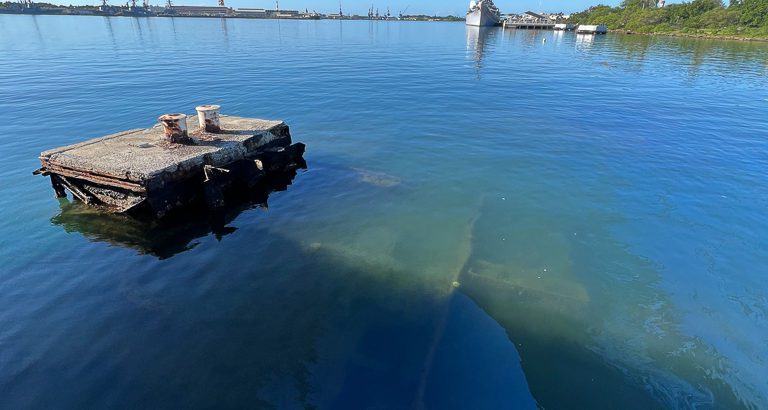Visiting the USS Arizona Memorial is one of the most moving experiences you’ll ever have as a traveler.
It’s a beautiful memorial but one of the things that sticks out when you visit is the oil leak.
It’s a leak that is moving to witness but also controversial with a lot of people worried about the environmental impact from the oil spilling out over the decades.
Below, I’ll give you more information on the oil leak and explain both sides of the debate while also giving you practical advice on how to view the site yourself.
Table of Contents
What is the oil leak at the USS Arizona?
On December 7, 1941 the Empire of Japan launched a surprise attack at Pearl Harbor in Oahu.
The Japanese destroyed or damaged 19 Navy ships, including 8 battleships, one of which was the USS Arizona which suffered a fireball explosion killing 1,177 men on board. This amounted to nearly half of the total deaths that day at Pearl Harbor.
Unlike other ships that could be salvaged, only parts of the USS Arizona could be salvaged and the majority of the ship remained submerged below the shallow waters of the harbor.
The USS Arizona was topped off with oil the day before the attack and after being sent to the bottom of the harbor with 1.5 million gallons (5.7 million liters) of oil aboard it has constantly leaked oil from its submerged tanks for decades.
The amount of oil that leaks every day varies but estimates are that it leaks up to nine quarts of oil every day. That’s approximately up to 1 gallon per day.
It’s believed between 14,000 and 64,000 gallons of oil have leaked from the USS Arizona since the attack but about 0.5 million gallons (1.9 million liters) remain.
Related: USS Arizona Memorial Review (Pearl Harbor, Hawaii)
Did you know? Oil is also leaking from the USS Utah although it seems that much less is known about that oil leak.
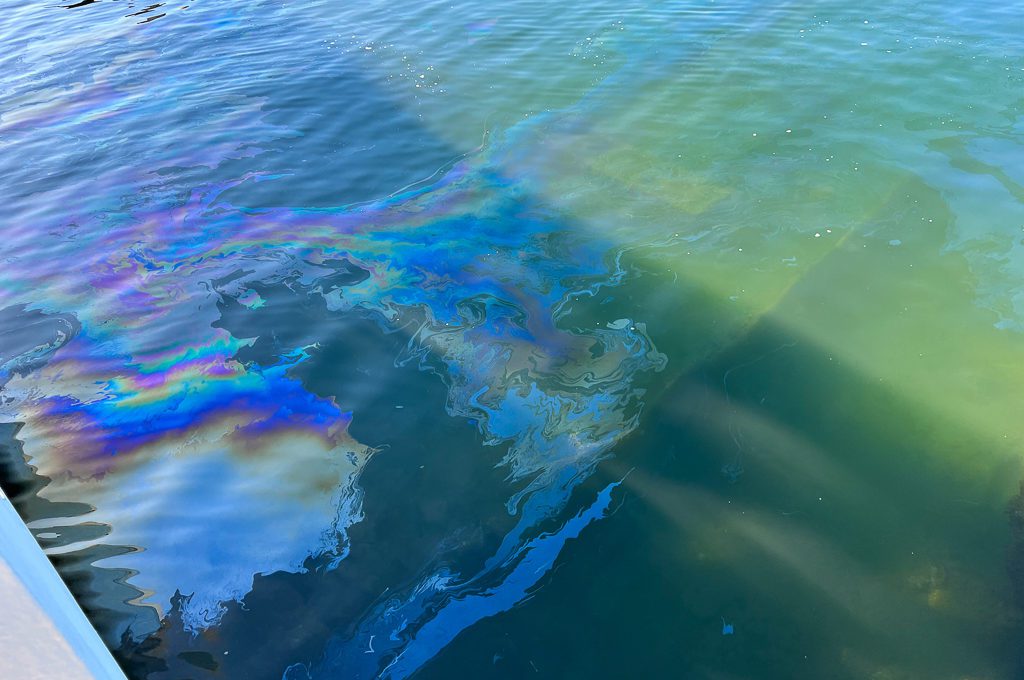
Why do they still allow the oil to leak?
There are two main reasons why the oil is allowed to leak.
First, the site is an active military cemetery and stopping the leak could force them to disturb the cemetery and potentially result in an environmental catastrophe.
Second, the leaking oil contains symbolic importance and is part of the experience for many people.
Active military cemetery
The USS Arizona is considered an active military burial site.
More than 900 of the 1,177 servicemen who died aboard the USS Arizona remain entombed in the ship.
In addition, over 44 survivors of the attack have chosen to have their urns placed within the turret of the ship.
You have to step back and remember this was one of the worst losses of life in American military history that rivaled Normandy on D-Day.
Moreover, the Arizona Memorial is a memorial for all members of the armed services who lost their life in Pearl Harbor. And by extension, it kind of serves as a memorial to all of those who died in World War II in the Pacific Theater.
It’s easily one of the most sacred places in the US.
Therefore, the military and the National Park Service want to interfere with it as little as possible out of respect for all of the fallen sailors and marines.
By taking actions to prevent the oil from leaking, it’s possible they will have to significantly impact the structure of the ship which would disturb the fallen’s final resting place.
“We just don’t know if the oil is creating pressure in the tanks that’s helping the structural integrity of the ship,” said the National Park Service’s Bojakowski according to CivilBeat.
“I wish I had more studies but I do know that there are a lot of really dedicated government employees who are very passionate about the environment and cultural resources and are working hard to kind of answer those (questions).“
And in addition to disturbing the cemetery, if the efforts to contain the leak are not successful, it could result in an environmental catastrophe.
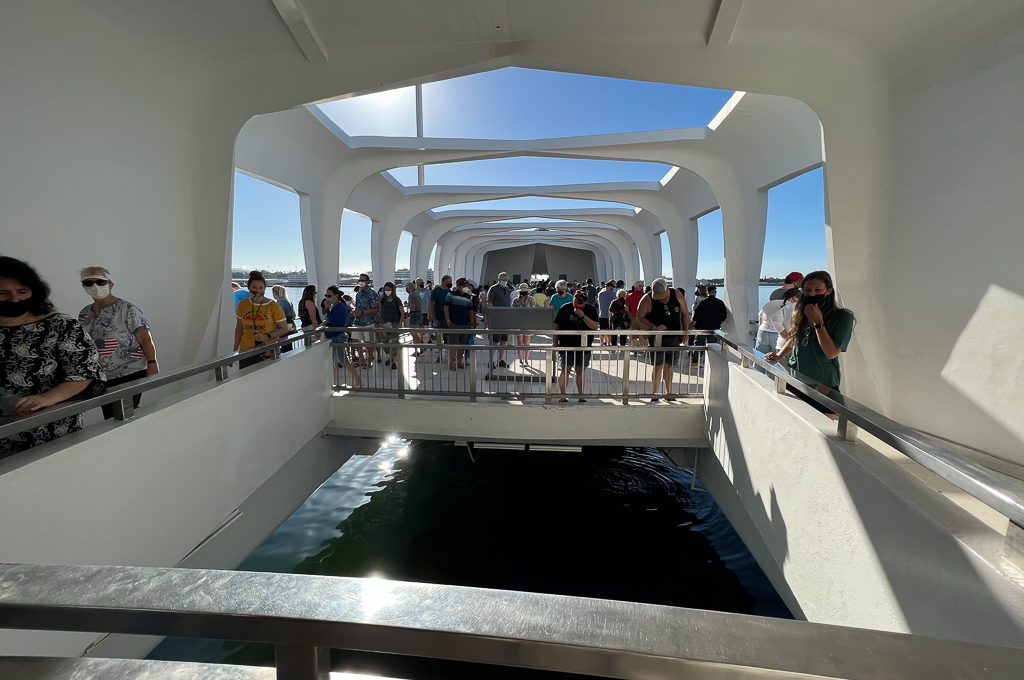
It’s a moving and symbolic site
The oil leak, also called the “Arizona tears” or “black tears” is also a visually moving site to witness.
When you see it in person it sort of connects you to the ship and all of the lives lost in a way that closes the gap on the many decades since the attack on Pearl Harbor.
Think of it this way: you are seeing oil that may have been refilled the day before the attack and there is just something surreal about that experience.
It’s also hard not to feel the symbolism from the glistening black tears when standing quietly on the memorial — it’s as if the ship is still mourning from the attack.
I’ve personally never experienced anything quite like it.
I think the Navy and National Park Service are well aware of this effect and it’s just another major reason why they are reluctant to remove the oil.
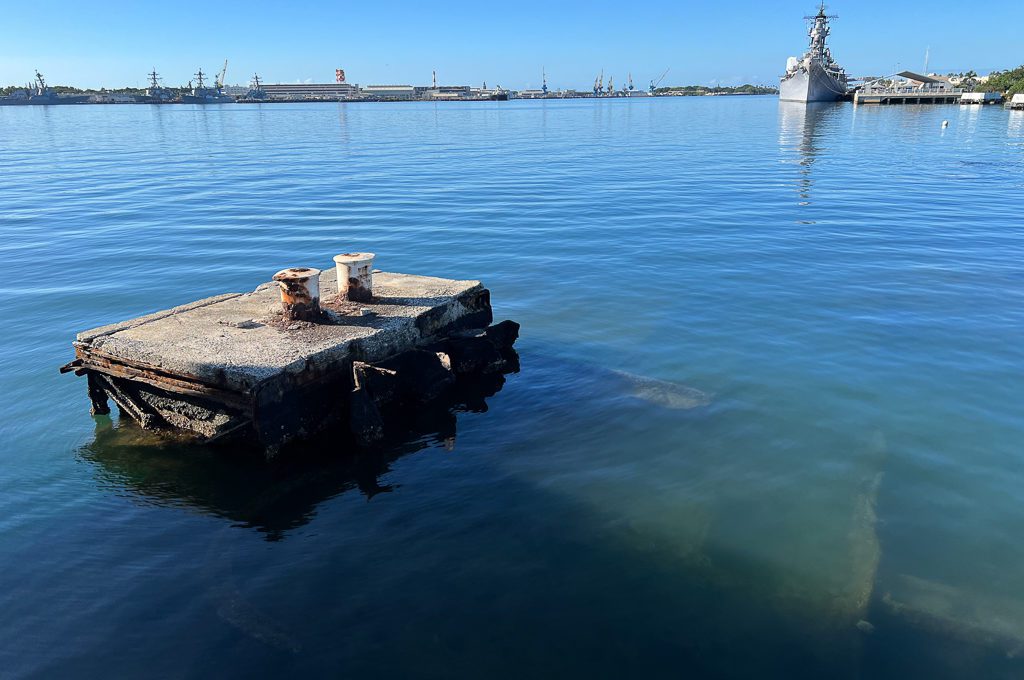
Environmental impact and Marine life
While the leaking oil is a moving site, it’s also something that is no doubt impacting the environment in a negative way.
The question is: just how much of a negative impact does it have?
It’s reported that the National Park Service, U.S. Fish and Wildlife Service, and the National Oceanic and Atmospheric Administration have all completed studies on the impact of the oil leak although the results of the studies don’t appear to be widely publicized.
The Department of Defense back in 2008 did their own 500+ page report and found:
Arizona’s hull does not appear to be in any danger of imminent collapse, and consequently there is no urgency to remove the oil to preserve the environment or prevent “environmental catastrophe.”
But they also stated more research is “needed to inform management decisions that address the actual environmental impact of the Arizona oil release.”
So it seems there is still a lot of unknown when it comes to the long-term effects of this oil leak and which steps to take to correct it. (Funding seems to have been an issue here.)
We do know that lots of marine animals currently inhabit the USS Arizona.
You can find coral growing on the ship and marine animals like sea turtles, seahorses, sharks, and several types of fish abound in the area. In fact, during our visit we saw a sea turtle swim to the surface over the ship.
There’s debate over what this presence of marine life means for the environmental impact.
On the one hand, the presence of such marine life means that life is still able to survive/thrive in this area. In fact, some forms of algae or bacteria might be thriving too much and could be contributing to the deterioration of the hull.
On the other hand, more marine life means more animals impacted by the oil leak.
Even if there is no danger of an imminent environmental catastrophe (based on the outdated report from 2008), the long-term exposure to the toxins in the oil could be having detrimental effects on different forms of marine life.
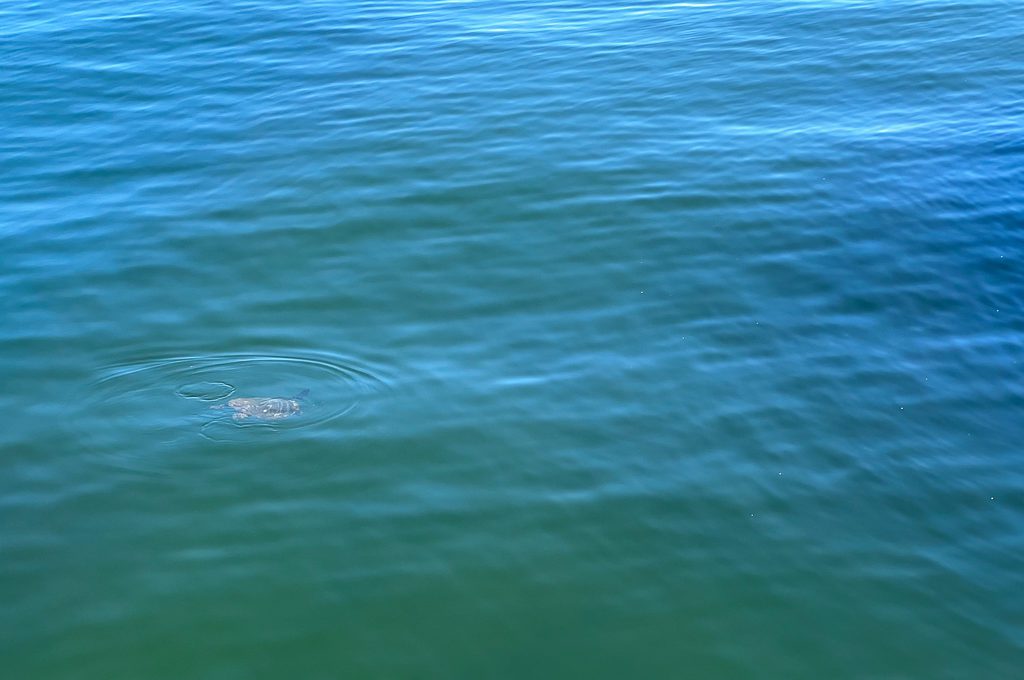
How to see the oil leak at the USS Arizona
In order to get a close glimpse of the oil leak at the USS Arizona, you’ll need to make a proper visit to the USS Arizona Memorial.
The memorial is located at Pearl Harbor and you’ll take a short boat shuttle ride from the Pearl Harbor Visitor Center to the USS Arizona Memorial.
You want to make reservations for the shuttle boat a few weeks before your visit to ensure that you have a spot and it will cost one dollar per person to make the reservation. Otherwise, the experience is free.
They do offer paid audio guides you can purchase to enhance your experience.
Also, at the visitor center you’ll find different ways to immerse yourself in the history of the USS Arizona such as through museum exhibits and even virtual reality.
Once you make it to the memorial, you’ll be walking above the USS Arizona that is mostly sunken.
The oil from the ship can pop up just about anywhere depending on the current and there’s never a guarantee of how much oil you’ll see.
I’ve seen aerial photos showing the oil flowing from either side of the ship/memorial and I’ve even seen photos with no visible oil on the water’s surface.
In our case, there was a steady stream of oil bubbling up the entire time we visited.
By the way, we have a detailed guide on visiting Pearl Harbor and all of the different sites so be sure to check that out if you haven’t already.

How long will the oil leak for?
The National Park Service estimates it could continue to leak oil for 500 years. That’s assuming that there is no intervention until that time and that the ship does not deteriorate before then.
If the environmental concerns continue to mount, I think there’s a good chance that something might be done about the leak before then.
It also sounds like while there may not be imminent danger of a structural collapse we don’t really know how quickly the ship will deteriorate. Things could rapidly change from decade to decade.
It seems that studies are still taking place to learn about the deterioration effects and some people estimate that the ship will only hold its current form for a few more decades.
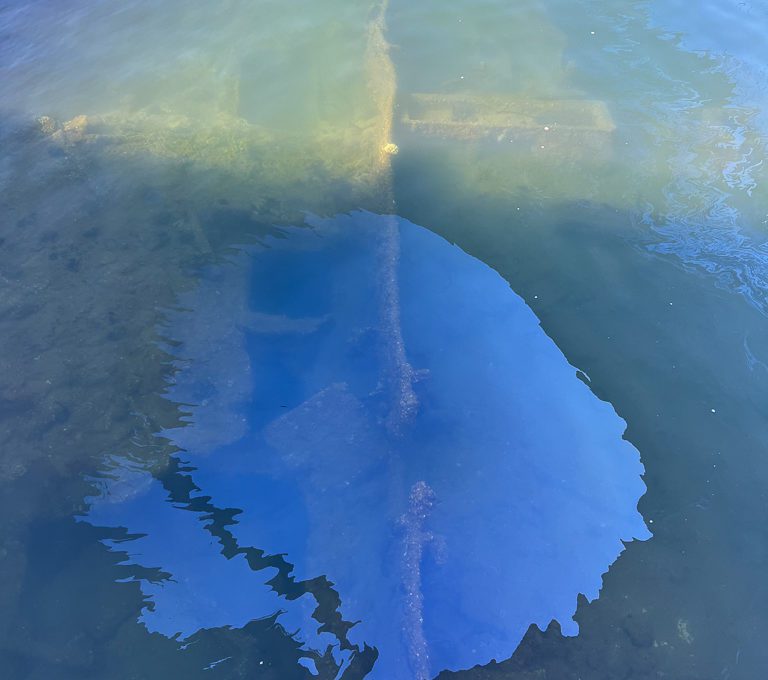
Final word
Visiting the USS Arizona Memorial is easily one of the most moving experiences you can have in Hawaii.
Catching the black tears from the oil leak adds an element to the experience that almost acts as a time machine making your visit all the more memorable.
But there do appear to be some serious environmental concerns that may need to be dealt with in the near future, so it’s not clear to me how much longer the oil leak will be visible.
Daniel Gillaspia is the Founder of UponArriving.com and the credit card app, WalletFlo. He is a former attorney turned travel expert covering destinations along with TSA, airline, and hotel policies. Since 2014, his content has been featured in publications such as National Geographic, Smithsonian Magazine, and CNBC. Read my bio.

